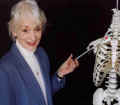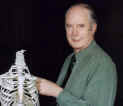 |
 |
 |
Helping You To Achieve ©™

![]()
Helping You To Achieve ©™
|
|
Mark with a surface marking pen the position of the Median nerve at the Elbow Joint and at the Wrist Joint on a model in the Anatomical position with a time limit of two minutes.
Objective No 81 - Criteria to be demonstrated. 1. Identify the pulse of the Brachial artery on the medial aspect of the Biceps brachii in the medial compartment of the Cubital fossa. 2. Mark the position of the pulse of the Brachial artery in the Cubital fossa. 3. Place a mark immediately medial to the Biceps brachii tendon at the level of the base of the Cubital fossa to indicate the position of the Median nerve. 4. Identify the tendon of Palmaris longus as it crosses the anterior surface marking of the Radio-carpal joint. (Objective No 48) 5. Place a mark immediately lateral to the tendon of Palmaris longus at the level of the Radio-carpal joint. 6. Identify the tendon of Flexor Carpi-radialis at the level of the Radio-carpal joint and surface mark. (Objective No 46) 7. The Median Nerve lies immediately lateral to the Tendon of Palmaris Longus as it crosses the anterior surface marking of the Radio-carpal joint and 1cm medial to the Tendon of Flexor Carpi-radialis. 8. A line marked on the surface joining points marked in steps 3 and 7 indicates the projected course of the Median nerve at the level of the Elbow Joint to the Radio-carpal joint.
|
Service ProvisionBronze. Students may take up a ,'Free start up ' package consisting of 100 of the behavioural objectives and criteria based on common questions asked in Living Anatomy. These are available free of charge on this Website. Silver. Students may buy a copy of the book "Surface and Living Anatomy" (ISBN: 0 7234 3261 9) which comes with a CD Rom (Windows PC format) containing 230 objectives which includes the 100 behavioural objectives contained in the Bronze Service. Gold "Helping you to Achieve" Contact Information
|